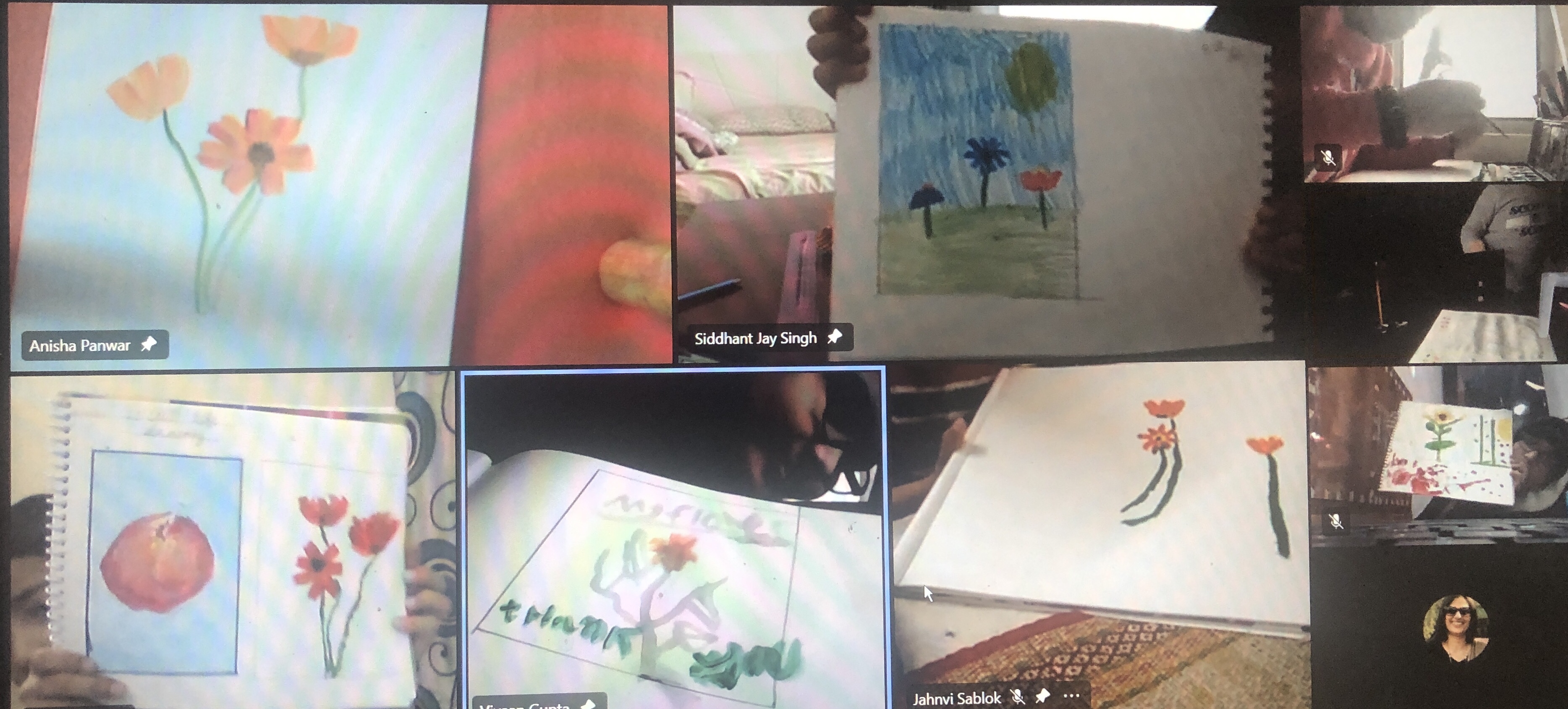UOI
Students were acquainted with the transdisciplinary theme, ‘Sharing the planet’. A class discussion enabled students to unpack the central idea ‘People can make choices to support sustainability of the Earth’s resources , thereby setting the scene for inquiry and provocation. Students tuned into the new unit with a story on landforms. They identified different landforms and understood their importance. They enhanced their understanding with a map marking activity about the landforms found in India. A discussion then led them to discuss that landforms are a key source of various natural resources.
Students learned about the classification of natural resources into finite and infinite resources. Thereon, a class discussion enabled them to understand the differences and similarities between finite and infinite resources. Students were introduced to fossil fuels by engaging in discussions and viewing audio-visuals.
Delving deeper into the unit, students were introduced to the 2nd line of inquiry, wherein, they identified that the impact of human behaviour causes problems for the availability of the limited natural resources. They also analysed that overuse of limited resources impacts the environment.













ENGLISH
English lessons commenced with students enhancing their reading skills with the fifth chapter of ‘Getting Granny’s Glasses’.
Students were introduced to alliteration. They further read a few tongue twisters. They learned about the importance of alliteration in writing and used their creative thinking skills to create a few of their own.
As they progressed, students were introduced to onomatopoeia. Students identified them in sentences, comics and graphic novels to express its sound effects.


MATH
Students were introduced to the concept of fraction. They compared fractions using manipulatives and fractional notation. . They understood the concept of equivalence to 1 , for example 2 halves = 1and three thirds= 1. They also represented and described the division of a collection into halves and quarters.


PE
Students continued with the unit on mini tennis where they focused on rally against the wall to improve their forehand drive. They also showed their arm and core strength in backward ball throw test.






HINDI
During their Hindi classes students read Hindi story- ‘माँ की सीख’. They identified new words and framed sentences in their journal. They were introduced to अनुच्छेद लेखन (paragraph writing). They read paragraph अनुच्छेद लेखन on ‘गाय’. They wrote paragraph on ‘मेरी माँ’ या ‘मेरा घर’. They read Hindi story- ‘तोड़ो नहीं जोड़ो’ पढ़ेंगे| They answered verbal questions and wrote meanings of unfamiliar words based on the story. They listened to a Hindi story- ‘एक्की दोक्की’ सुनेंगे . They identified new words from the story. They attempted true and false for the given statements based on the story.



DANCE
During this week students started their classes with basic warmup routines focussing on their joint rotations and stretches. They revisited their class dance routines using the elements of choreography learned in class.
Song:- “Thousand years”.
Style:- Contemporary
Song:- “Hall of fame”
Style:- Freestyle
Song:- “Toca Toca”
Style:- Hip Hop




MUSIC
Students learned and explored the solfege. They were introduced to a song ‘Doe a Deer’ to reinforce their understanding of solfege. They sang the song in groups to improve their intonation and enunciation.



ICT
During ICT lessons students were introduced to Adobe Spark Post , an easy-to-use online tool that allows the user to create professional quality social media graphics and posters in just minutes. Students were briefed about the steps to sign up for Adobe Spark Post. They learned to choose a template and add text, images, icons, and layout to their poster. They also learned to share and publish their poster. . They are in the process of creating a poster on natural resources.
Students were apprised of the importance of being responsible and respectful online. . They strengthened their understanding on the same by attempting a quiz.



VISUAL ART
During the class, students learned about origami, the ancient art of paper folding has applications for teaching geometry, thinking skills, and problem solving. They learned to make various types of bookmarks.









LIBRARY
In library sessions, students explored the different fiction genres and read popular series like Bear Grylls, The Magic Tree House, Rainbow Fairies, Usborne series. . They immersed themselves in reading and discovered many authors in this genre.










































































































































































































































































































































































































































































































































































































































